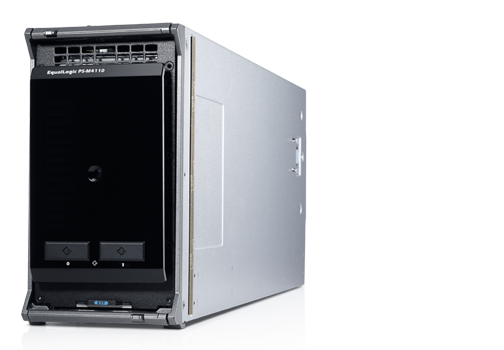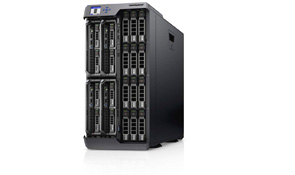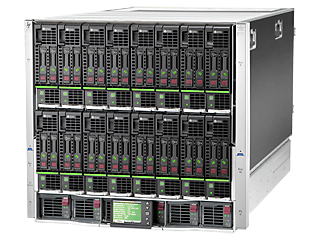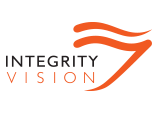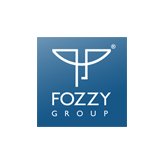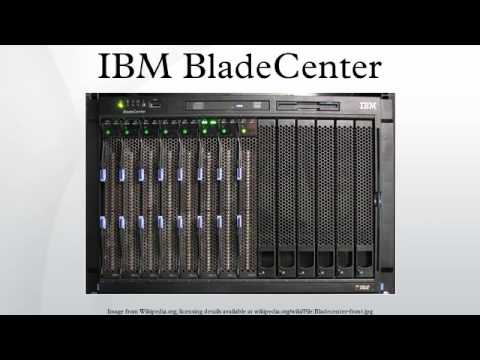
Categories
About Product
Description
Introduced in 2002, based on engineering work started in 1999, the IBM BladeCenter was relatively late to the blade server market. It differed from prior offerings in that it offered a range of x86 Intel server processors and input/output (I/O) options. In February 2006, IBM introduced the BladeCenter H with switch capabilities for 10 Gigabit Ethernet and InfiniBand 4X.
A web site called Blade.org was available for the blade computing community through about 2009.
In 2012 the replacement Flex System was introduced.
IBM BladeCenter (E) The original IBM BladeCenter was later marketed as BladeCenter E[3] with 14 blade slots in 7U. Power supplies have been upgraded through the life of the chassis from the original 1200 to 1400, 1800, 2000 and 2320 watt.
The BladeCenter (E) was co-developed by IBM and Intel and included:
IBM BladeCenter T
BladeCenter T is the telecommunications company version of the original IBM BladeCenter, available with either AC or DC (48 V) power. Has 8 blade slots in 8U, but uses the same switches and blades as the regular BladeCenter E. To keep NEBS Level 3 / ETSI compliant special Network Equipment-Building System (NEBS) compliant blades are available.
IBM BladeCenter H
Upgraded BladeCenter design with high-speed fabric options. Fits 14 blades in 9U. Backwards compatible with older BladeCenter switches and blades.
IBM BladeCenter HT
BladeCenter HT is the telecommunications company version of the IBM BladeCenter H, available with either AC or DC (48 V) power. Has 12 blade slots in 12U, but uses the same switches and blades as the regular BladeCenter H. But to keep NEBS Level 3 / ETSI compliant special NEBS compliant blades are available.
IBM BladeCenter S
Targets mid-sized customers by offering storage inside the BladeCenter chassis, so no separate external storage needs to be purchased. It can also use 110 V power in the North American market, so it can be used outside the datacenter. When running at 120 V , the total chassis capacity is reduced.
A web site called Blade.org was available for the blade computing community through about 2009.
In 2012 the replacement Flex System was introduced.
IBM BladeCenter (E) The original IBM BladeCenter was later marketed as BladeCenter E[3] with 14 blade slots in 7U. Power supplies have been upgraded through the life of the chassis from the original 1200 to 1400, 1800, 2000 and 2320 watt.
The BladeCenter (E) was co-developed by IBM and Intel and included:
- 14 blade slots in 7U
- Shared media tray with optical drive, floppy drive and USB 1.1 port
- One (upgradable to two) management modules
- Two (upgradable to four) power supplies
- Two redundant high-speed blowers
- Two slots for Gigabit Ethernet switches (can also have optical or copper pass-through)
- Two slots for optional switch or pass-through modules, can have additional Ethernet, Fibre Channel, InfiniBand or Myrinet 2000 functions.
IBM BladeCenter T
BladeCenter T is the telecommunications company version of the original IBM BladeCenter, available with either AC or DC (48 V) power. Has 8 blade slots in 8U, but uses the same switches and blades as the regular BladeCenter E. To keep NEBS Level 3 / ETSI compliant special Network Equipment-Building System (NEBS) compliant blades are available.
IBM BladeCenter H
Upgraded BladeCenter design with high-speed fabric options. Fits 14 blades in 9U. Backwards compatible with older BladeCenter switches and blades.
- 14 blade slots in 9U
- Shared Media tray with Optical Drive and USB 2.0 port
- One (upgradable to two) Advanced Management Modules
- Two (upgradable to four) Power supplies
- Two redundant High-speed blowers
- Two slots for Gigabit Ethernet switches (can also have optical or copper pass-through)
- Two slots for optional switch or pass-through modules, can have additional Ethernet, Fibre Channel, InfiniBand or Myrinet 2000 functions.
- Four slots for optional high-speed switches or pass-through modules, can have 10 Gbit Ethernet or InfiniBand 4X.
- Optional Hard-wired serial port capability
IBM BladeCenter HT
BladeCenter HT is the telecommunications company version of the IBM BladeCenter H, available with either AC or DC (48 V) power. Has 12 blade slots in 12U, but uses the same switches and blades as the regular BladeCenter H. But to keep NEBS Level 3 / ETSI compliant special NEBS compliant blades are available.
IBM BladeCenter S
Targets mid-sized customers by offering storage inside the BladeCenter chassis, so no separate external storage needs to be purchased. It can also use 110 V power in the North American market, so it can be used outside the datacenter. When running at 120 V , the total chassis capacity is reduced.
- 6 blade slots in 7U
- Shared Media tray with Optical Drive and 2x USB 2.0 ports
- Up to 12 hot-swap 3.5" (or 24 2.5") SAS or SATA drives with RAID 0, 1 and 1E capability, RAID 5 and SAN capabilities optional with two SAS RAID controllers
- Two optional Disk Storage Modules for HDDs, six 3.5-inch SAS/SATA drives each.
- 4 hot-swap I/O switch module bays
- 1 Advanced Management Module as standard (no option for secondary Management Module)
- Two 950/1450-watt, hot-swap power modules and ability to have two optional 950/1450-watt power modules, offering redundancy and power for robust configurations.
- Four hot-swap redundant blowers, plus one fan in each power supply.
Competitive products
Deployments with this product
User features
Roles of Interested Employees
Chief Executive Officer
Chief Information Officer
Chief Technical Officer
Chief IT Security Officer
Organizational Features
Own Data Center
Data Warehouse
GDPR Compliance
